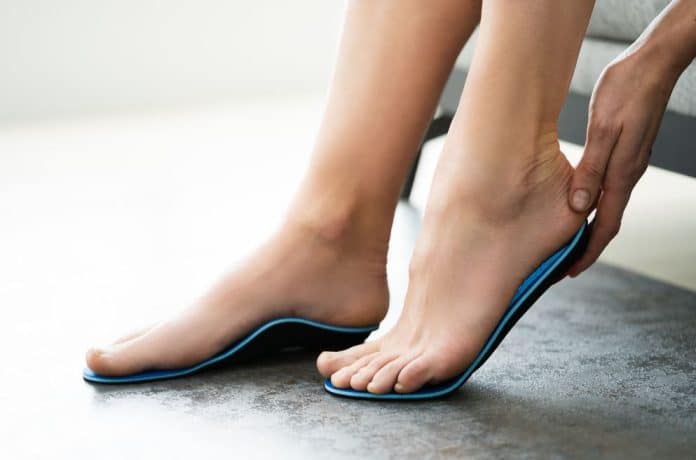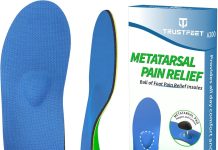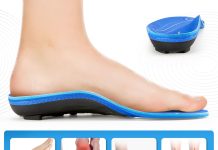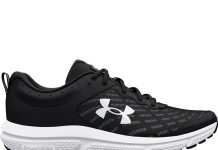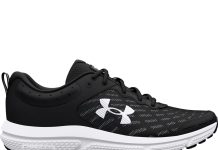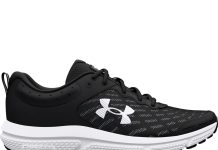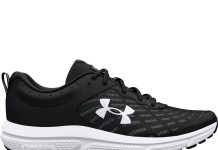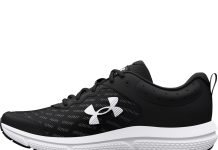Have you ever wondered if excessive arch support could harm your feet? In this article, we explore the potential risks of relying too heavily on arch support and the impact it can have on foot health.
While arch support is often prescribed to alleviate discomfort and promote proper alignment, growing evidence suggests that too much support may weaken the muscles in our feet, leading to long-term issues. Join us as we delve into the potential downsides of excessive arch support and learn how to strike the right balance for optimal foot health.
Potential Risks of Excessive Arch Support
When it comes to footwear, finding the right balance between comfort and proper foot support is crucial. While arch support can offer many benefits, such as reducing pain and promoting alignment, it’s essential to be aware of the potential risks associated with excessive arch support. This article will explore some possible consequences of relying too heavily on arch support, including muscle atrophy, loss of foot strength, decreased mobility, and an increased risk of foot conditions.
Muscle Atrophy
Definition and Causes
Muscle atrophy refers to the wasting or losing muscle tissue, resulting in decreased muscle strength and function. This condition can occur when muscles are not used or stimulated enough, leading to their gradual deterioration. In the context of excessive arch support, constantly relying on artificial support can prevent the muscles in the feet and lower legs from engaging and strengthening properly.
Effect on Feet
Excessive arch support can significantly impact the muscles in the feet. When the arches of the feet are consistently supported, the muscles responsible for maintaining the arches become weaker over time. This muscle weakness can decrease the foot’s ability to support the body’s weight and maintain proper alignment.
Long-Term Consequences
Over time, the long-term consequences of muscle atrophy caused by excessive arch support can become evident. Weakened foot muscles can contribute to imbalances in the feet and lower legs, potentially leading to issues such as flat feet or fallen arches. Additionally, weakened muscles may result in altered gait patterns, placing excess strain on other areas of the feet, ankles, knees, and hips.
Loss of Foot Strength
Importance of Foot Strength
Foot strength plays a crucial role in maintaining overall foot health and functionality. Strong foot muscles provide stability, balance, and support during various activities like walking, running, and standing. When the feet are strong, they can better absorb shock, maintain proper alignment, and adapt to uneven surfaces. However, excessive arch support can hinder foot strength’s natural development and maintenance.
Effect of Excessive Arch Support
Relying too heavily on arch support can lead to losing foot strength. When arch support takes over the work the foot muscles should be doing, those muscles gradually weaken due to decreased use and stimulation. This loss of foot strength can lead to instability, reduced shock absorption, and an increased risk of foot and lower limb injuries.
Implications for Daily Activities
The loss of foot strength from excessive arch support can affect various daily activities. From simple tasks like walking or climbing stairs to more demanding activities like sports or hiking, weak foot muscles can compromise performance and increase the likelihood of injuries. Additionally, individuals may experience difficulties balancing or maintaining stability, impacting overall mobility and quality of life.
Decreased Mobility
Restricted Range of Motion
Excessive arch support can limit the natural range of motion in the feet and ankles. When the arches are constantly supported and immobilized, the joints and surrounding tissues may become stiff and lose flexibility. This restricted range of motion can affect how the feet and ankles move, making it more challenging to perform specific movements and increasing the risk of compensatory movements in other body areas.
Impact on Overall Foot Health
Decreased mobility due to excessive arch support can hurt overall foot health. Restricted range of motion in the feet can lead to joint stiffness, muscle imbalances, and decreased circulation. These factors can contribute to foot pain, deformity, and a higher susceptibility to foot conditions or injuries.
Potential for Injuries
Limited mobility caused by excessive arch support can increase the risk of foot and lower limb injuries. When the feet and ankles cannot move through their full range of motion, the body’s ability to adapt to uneven surfaces, absorb shock, and maintain proper alignment becomes compromised. This can make individuals more prone to ankle sprains, stress fractures, and other repetitive injuries.
Increased Risk of Foot Conditions
Plantar Fasciitis
Plantar fasciitis is a common foot condition characterized by inflammation of the plantar fascia, a thick band of tissue that runs along the bottom of the foot. Excessive arch support can contribute to the development of plantar fasciitis by placing excessive strain on the plantar fascia and reducing the natural shock-absorbing properties of the foot.
Metatarsalgia
Metatarsalgia refers to pain and inflammation in the ball of the foot, often caused by excessive pressure or overuse. Excessive arch support can contribute to metatarsalgia by altering the weight distribution in the foot, leading to increased pressure on the metatarsal heads.
Achilles Tendonitis
Achilles tendonitis is the inflammation or irritation of the Achilles tendon, which connects the calf muscles to the heel bone. Excessive arch support can contribute to Achilles tendonitis by altering the foot biomechanics and increasing stress on the Achilles tendon.
Bunions
Bunions are bony bumps that develop at the base of the big toe, often causing pain and deformity. While bunions can have various causes, excessive arch support can exacerbate the condition by forcing the foot into an unnatural position and putting additional pressure on the joint.
Morton’s Neuroma
Morton’s neuroma is a painful condition characterized by thickening the tissue around a nerve leading to the toes. Excessive arch support can contribute to the development of Morton’s neuroma by compressing the forefoot and exacerbating nerve irritation.
Plantar Fasciitis
Definition and Causes
Plantar fasciitis is a condition that involves inflammation of the plantar fascia, a thick band of tissue that connects the heel bone to the toes. Excessive arch support can contribute to the development of plantar fasciitis by causing an imbalance in the distribution of forces in the foot, increasing stress on the plantar fascia.
Link to Excessive Arch Support
Constantly relying on arch support can prevent the natural stretching and strengthening of the plantar fascia. When the arch is constantly supported, the plantar fascia does not get the opportunity to elongate and adapt to the loads placed upon it, leading to increased tension and inflammation.
Symptoms and Treatment
The most common symptom of plantar fasciitis is heel pain, especially in the morning or after rest. Treatment for plantar fasciitis typically includes a combination of rest, stretching exercises, and supportive footwear. However, individuals with excessive arch support may need to gradually transition to footwear with less arch support, allowing the plantar fascia to adapt and regain strength gradually.
Metatarsalgia
Definition and Causes
Metatarsalgia refers to pain and inflammation in the ball of the foot, specifically the metatarsal heads. Excessive arch support can contribute to metatarsalgia by altering the weight distribution in the foot, causing excessive pressure on the metatarsal heads.
Link to Excessive Arch Support
When arch support artificially elevates the arches of the feet, it can shift the body’s weight distribution forward. This forward shift places increased pressure on the ball of the foot, leading to metatarsalgia symptoms.
Symptoms and Treatment
The symptoms of metatarsalgia can include pain, a burning sensation, or numbness in the ball of the foot. Treatment options often involve rest, ice, proper footwear, and orthotic inserts to redistribute pressure evenly across the foot. Gradually transitioning to footwear with less arch support can also help alleviate symptoms by reducing the excessive pressure on the metatarsal heads.
Achilles Tendonitis
Definition and Causes
Achilles tendonitis refers to inflammation or irritation of the Achilles tendon, which connects the calf muscles to the heel bone. Excessive arch support can contribute to Achilles tendonitis by altering the foot biomechanics, leading to increased stress on the Achilles tendon.
Link to Excessive Arch Support
When the arch is excessively supported, it can change the alignment and function of the foot. These altered foot mechanics can increase strain on the Achilles tendon, potentially leading to inflammation and tendonitis.
Symptoms and Treatment
The symptoms of Achilles tendonitis usually include pain, stiffness, and swelling in the back of the ankle. Treatment often involves rest, stretching exercises, and icing the affected area. Gradual transition to footwear with less arch support can also help by allowing the foot and Achilles tendon to function more naturally.
Bunions
Definition and Causes
Bunions are bony bumps that develop at the base of the big toe, causing the big toe to deviate towards the other toes. While various factors can contribute to their formation, excessive arch support can worsen bunions by forcing the foot into an unnatural position and placing additional pressure on the joint.
Link to Excessive Arch Support
Excessive arch support can alter the alignment of the foot, which can indirectly affect the position of the big toe joint. These altered foot mechanics can exacerbate a pre-existing bunion or potentially contribute to developing a new one.
Symptoms and Treatment
Bunions often cause pain, swelling, and a visible bump at the base of the big toe. Treatment options for bunions range from conservative measures such as wearing properly fitting shoes and using orthotic inserts to surgical intervention for severe cases. Choosing footwear with adequate support is important, but excessive arch support should be avoided to prevent aggravating bunions.
Morton’s Neuroma
Definition and Causes
Morton’s neuroma is a painful condition involving thickening the tissue around a nerve leading to the toes. While the exact cause of Morton’s neuroma is not fully understood, excessive arch support can contribute to its development by compressing the forefoot and exacerbating nerve irritation.
Link to Excessive Arch Support
When excessive arch support lifts the arch and compresses the forefoot, it can increase the pressure on the nerves between the metatarsal heads, potentially leading to the development or worsening of Morton’s neuroma.
Symptoms and Treatment
Morton’s neuroma typically presents with symptoms such as pain, burning, tingling, or numbness in the ball of the foot and between the affected toes. Treatment options can range from conservative measures like footwear modifications and orthotic inserts to more invasive interventions such as corticosteroid injections or surgical neuroma removal. Reducing arch support levels can help alleviate pressure on the affected area and potentially provide relief.
Gradual Transition and Adaptation
Adjusting to New Support Levels
Suppose you have been relying on excessive arch support and are concerned about the potential risks discussed in this article. In that case, it may be beneficial to gradually transition to footwear with less arch support. Start by using shoes with moderate arch support and gradually decrease the support over time. This gradual transition allows the foot muscles to adapt and gradually regain strength.
Building Foot Strength
It is essential to focus on building foot strength to counteract the potential adverse effects of excessive arch support. Incorporating foot-strengthening exercises, such as toe curls, calf raises, and arch-strengthening exercises, can help improve muscle function and foot stability.
Monitoring any Discomfort or Pain
As you change your footwear or engage in foot-strengthening exercises, monitoring your feet for any discomfort or pain is essential. If you experience any new or worsening symptoms, it is advisable to consult a healthcare professional or a podiatrist who can provide individualized guidance and support.
In conclusion, while arch support can benefit, excessive reliance on it can come with potential risks for foot health. Muscle atrophy, loss of foot strength, decreased mobility, and an increased risk of foot conditions are all possible consequences of relying too heavily on arch support.
By gradually transitioning to footwear with moderate support, focusing on foot strength exercises, and monitoring any discomfort or pain, finding a balance that supports both the arches and overall foot health is possible. Remember, a consult with a healthcare professional or a podiatrist can provide personalized advice based on your needs and foot health.

